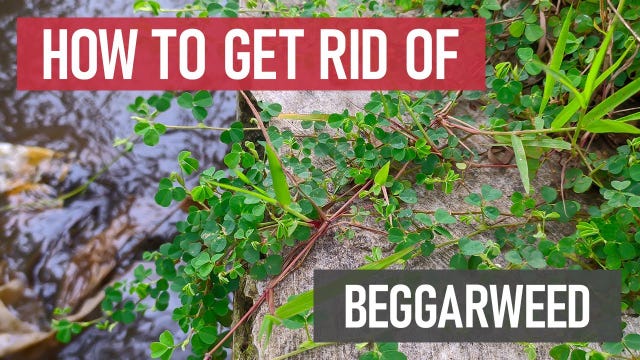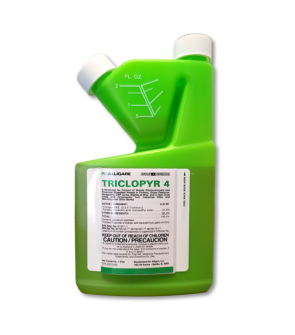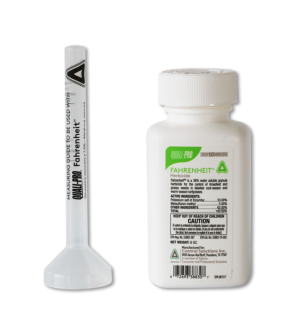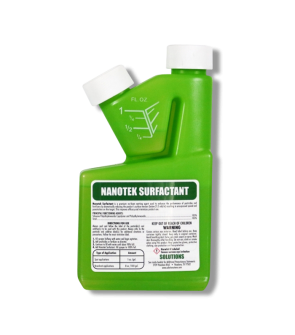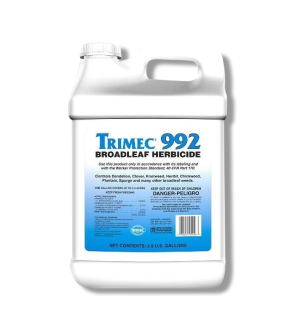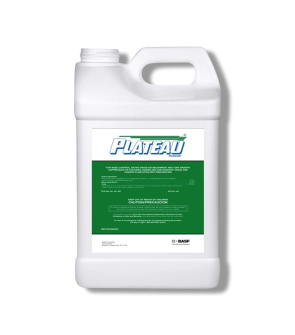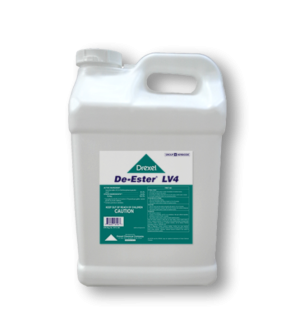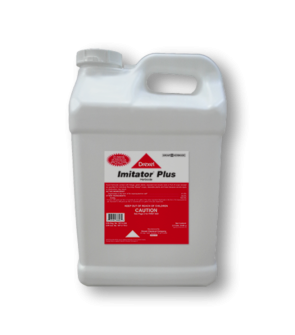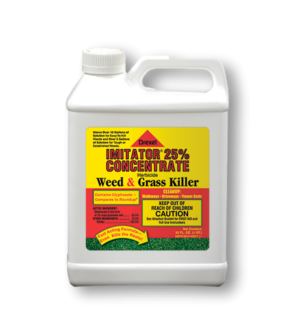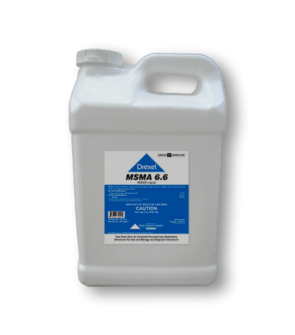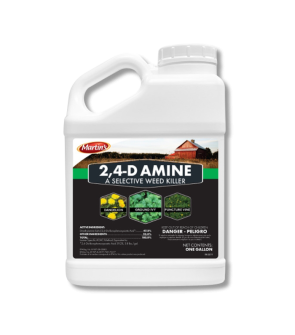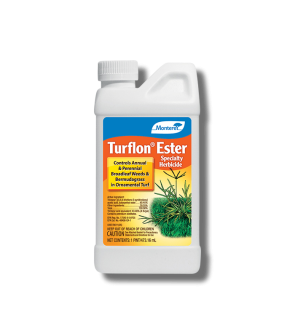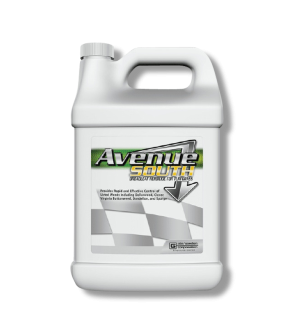Gain access to personalized product screening, the best pricing, rewards, and more!
Most Effective Products
Beggarweed Control: How to Get Rid of Beggarweed
Beggarweed, also commonly known as creeping beggarweed, is a perennial broadleaf weed that grows low to the ground and stands out with three leaflets attached to a main stem. The weed is found mainly in the southern part of the United States, with Texas and Florida having the largest problem with this plant invading landscapes.
Beggarweed rears its ugly head in the spring and becomes prominent in the summer, which is when lawn owners become frustrated with keeping it under control. Pulling or digging out the plant is ineffective, and some have even labeled it the "unkillable weed" because of its resistance to your average broadleaf herbicide.
If you are dealing with pesky beggarweed, our step-by-step DIY guide will show you how to get rid of it quickly and save money using our professional quality herbicides.
Identification
Before carrying out a treatment program, you will need first to be certain that you are dealing with creeping beggarweed and not some other weed. Careless identification can lead to using the wrong treatment methods, which can waste time and money.

- Many beggarweeds grow prostrate or along the ground up to 8 inches from the base, but some species can also grow upright up to 6 feet tall.
- The leaves grow in a trifoliate shape, dividing each leaf into three leaflets. Depending on the species, the leaflets range from short and heart-shaped to up to 4 inches in length and ovular or lance-shaped.
- The flowers can range in color from white to violet. When seed pods form, several seeds are individually encased within the pod.
Use the above description and image to help you identify invasive plants on your landscape, such as beggarweed. If you are unsure, you can always contact us, and our lawn care experts will help you correctly identify the plant you have and offer personalized control suggestions.
Inspection
After you have confirmed that you are dealing with beggarweed, you can move on to inspection. During this phase, you will locate areas where creeping beggarweed is thriving and observe the conditions that allow it to thrive. This information will help you know where to focus your herbicide application.

Where to Inspect
Beggarweed can be found in open lawns, roadsides, pastures, and other disturbed areas on residential or commercial properties. This plant grows well in dry areas with full sunlight throughout the day.
What to Look For
Look for the creeping beggarweed plant and see where they are concentrated. You will notice its large dark green leaflets and how it creeps along the ground. Large infestations of beggarweed will stand out as they create almost a mat.
When inspecting your property, note where beggarweed is growing and how far along its life cycle the plants are. You’ll use this information to direct your treatment.
Treatment
Creeping beggarweed can be a tough weed to control using cultural methods, largely because its large taproot makes hand-pulling difficult. Beggarweed seedpods are easily disrupted, and hand-pulling can spread them back into your lawn. Additionally, the weed can withstand mowing at a low height and will keep coming back.
Due to the plant’s large taproot, manual removal is often insufficient to eliminate a beggarweed infestation. A small piece of the taproot can break off and remain in the soil, resulting in the plant growing back.
The best method of control for eliminating beggarweed from your lawn is to use a post-emergent herbicide labeled not to injure your turfgrass. In warm-season lawns, we recommend Fahrenheit Herbicide.
Step 1: Mix and Apply Fahrenheit

Fahrenheit is a Dicamba and Metsulfuron-methyl based water soluble granule that delivers broad-spectrum control of annual and perennial broadleaf weeds in commercial and residential properties.
Determine how much Fahrenheit Herbicide to use by measuring the square footage of the treatment area. To find the square footage, measure the treatment areas' length and width in feet, then multiply them together (length X width = square footage).
For spot applications, mix 0.2 ounces of the product per 1 gallon of water to apply over 1,000 square feet.
Keep in mind this product is only labeled to control creeping beggarweed and Florida beggarweed. Temporary stunting or chlorosis may occur when making applications over St. Augustinegrass, Bermudagrass, or Zoysiagrass.
Mix and apply your herbicide with a handheld pump sprayer. To enhance the effectiveness of your treatment, we recommend using a surfactant like Nanotek. Nanotek is a non-herbicide product designed to improve the adhesion and penetration of pesticides onto treated surfaces.
When using Nanotek, add 1 fluid ounce per 1 gallon of solution.
Spot-treat any beggarweed plant you’ve found during your inspection. Use a fan or cone spray pattern to ensure the leaves are fully coated, and spray the weed to the point of wet but not runoff. Be sure to spray on calm days when temperatures are not too hot, and wind speeds are low to minimize drift.
Step 2: Follow Up Application
When applied properly, affected weeds will turn yellow and begin to die. If signs of recovery are observed, especially if the plant’s taproot is still alive, a follow-up application may be necessary. Reapplication intervals with Fahrenheit range from 4 to 6 weeks, depending on the application site.
Applications are most effective when plants are newly emerged before bud formation.
Prevention
Once beggarweed has been eliminated from your property, you must implement preventative measures to ensure it does not return.
- One of the best ways to control beggarweed after it’s been eliminated from your property is to mow your grass at proper intervals to maintain a thick growing density. A lawn dense with taller trimmed grass can better choke out weeds and prevent them from establishment.
- We also recommend promoting the health of your turf to reduce the conducive conditions that allow weeds and disease to take hold. Reduce the shade cast on your lawn by trimming overgrown shrubbery and tree branches, rake away leaf litter and pick up any debris, and employ a proper watering schedule to provide the local grass with enough water to strengthen its roots but not so much that it will encourage weeds. Many grasses require 1 inch of water every week. Apply the water all at once in the morning so it has time to seep into the ground without evaporating in the sun.
Key Takeaways
What is Beggarweed?
- Beggarweed (creeping beggarweed) is a perennial broadleaf weed with a large taproot and deep rhizomes. It can be difficult to control and frustrates lawn owners because mowing and hand-pulling are ineffective against it.
How to Get Rid of Creeping Beggarweed
- We recommend Fahrenheit Herbicide, which has demonstrated excellent control of beggarweed. Mix well, spot treat, and be careful not to get chemicals on desired plants.
Preventing Beggarweed Reinfestation
- Prevent beggarweed from returning with regular lawn care maintenance (fertilizing, mowing, watering).






